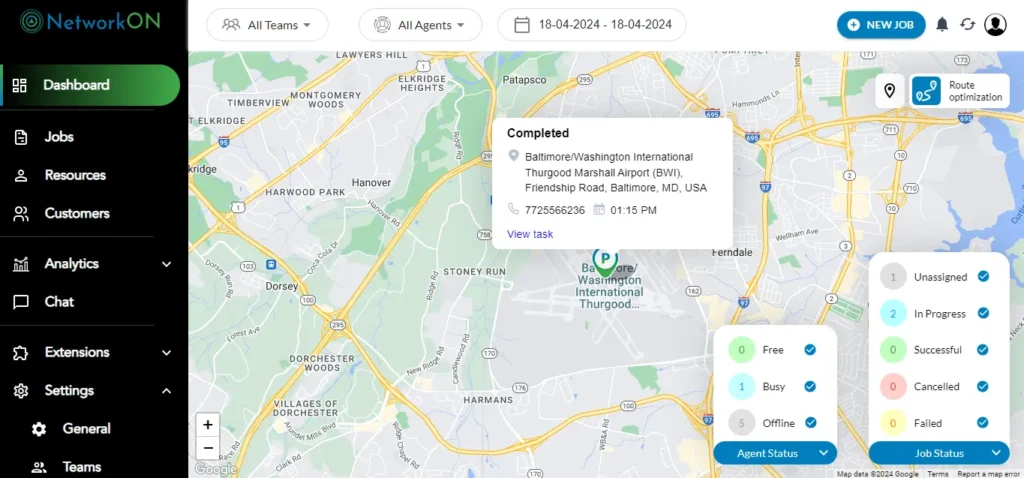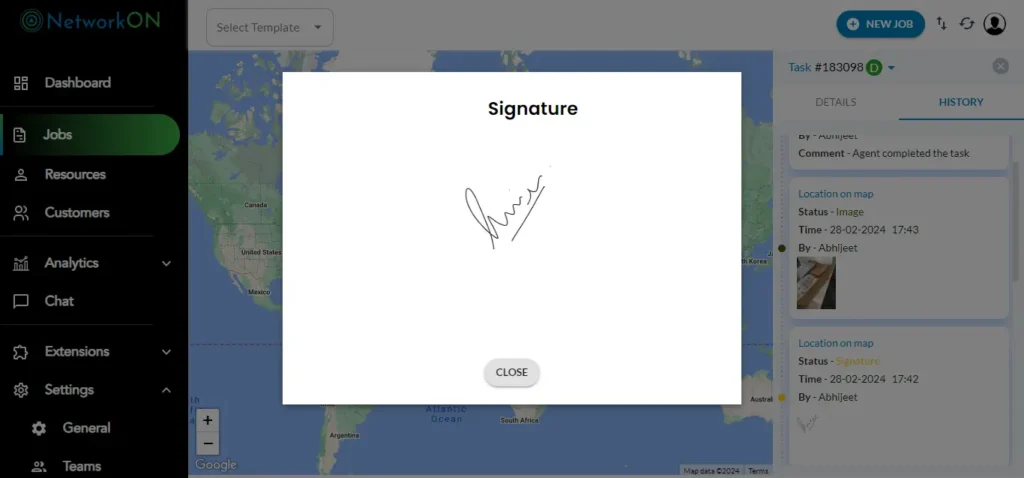Table of Contents
Choosing between traditional and modern courier services is pivotal to a business’s efficiency, cost, and customer satisfaction. While traditional services have laid the groundwork for reliability, the technological infusion in modern couriers has redefined the delivery experience, especially with the explosive growth of e-commerce.

As e-commerce grows, courier services continue to meet increasing demands and complex logistical puzzles. Their evolution has resulted in a more segmented market, giving rise to niche couriers specializing in particular goods or sectors. These sector-specific services offer tailored solutions for specialized items, which are crucial to your business’s delivery strategy.
In this definitive blog, delve into our courier guide and learn how to leverage different options to ensure your product deliveries are as efficient and effective as the products themselves.
Shipping Options and Costs
Discovering the right balance between service efficiency and cost-effectiveness is critical for businesses of all sizes. We delve into the various aspects of courier service pricing and provide insights on using different shipping models to stay competitive without sacrificing quality.
Cost-Effective Shipping Models
Not all shipping services are created equal, and selecting a cost-effective model is vital to maintaining a healthy bottom line. Assessing your specific shipping needs regarding speed, weight, and volume is essential to determining which model will serve you best.
Comparative Analysis of Various Courier Pricing Structures
Different couriers possess distinct pricing structures, and a smart comparison can lead to significant cost savings. Some couriers offer flat rates for items within particular weight brackets. In contrast, others calculate cost based on distance and package size. A thorough analysis will reveal the most financially advantageous options for your particular distribution requirements.
Balancing Service Quality and Costs to Maximize Market Competitiveness
A successful business keeps service quality while seeking to reduce costs. Investigating and partnering with couriers that provide reliable delivery and excellent customer service is crucial to ensuring low prices do not result in low customer satisfaction.
Bulk Shipping and Discounts
If you’re shipping in bulk, you may be eligible for discounts that significantly lower shipping costs. Most courier services offer tiered pricing based on volume, rewarding you for more substantial shipments with better per-unit rates.
Leveraging Volume for Cost Savings
The principle of economies of scale applies to shipping, too. The more you ship, the more you can save. To leverage this, negotiate volume-based discounts with your courier service to maximize your bulk shipments.
Partnering with Couriers for Mutually Beneficial Terms
Establishing a strong relationship with your courier service provider that uses an effective delivery platform can result in beneficial terms. This partnership approach can lead to cost savings, improved service levels, dedicated support, and a more personalized shipping experience for your customers.

Packaging and Labeling Guidelines
Packaging and labeling are critical considerations when preparing goods for shipment. Ensuring your items are securely packaged and accurately labeled protects the contents during transit and facilitates a smooth delivery process.
The Art of Packaging Goods Safely
Packaging your goods carefully is crucial to minimize the risk of damage. Each type requires a specific packing approach for optimal protection, whether you are sending fragile items, electronics, or non-perishable goods.
- Fragile items: Wrap them in bubble wrap and place them in a double-walled box, ensuring enough cushioning to absorb shocks.
- Electronics: Secure with anti-static foam or materials that prevent electrostatic discharge. Use sturdy boxes that can support the weight.
- Non-perishable goods: Use high-quality corrugated boxes and void fillers to prevent the items from moving during transport.
Sustainability in Packaging – Balancing Safety and Environmental Impact
To reduce environmental impact, consider using sustainable packaging solutions that do not compromise the safety of your goods. Options such as biodegradable packing peanuts, recycled paper or cardboard, and corrugated bubble wrap are eco-friendly alternatives to traditional materials.
Accurate and Informative Labeling
Accurate labeling is crucial for ensuring your shipment reaches its destination immediately. Each label should be clear and contain all necessary information.
- Sender’s and recipient’s information: Full names, addresses, and contact details.
- Package contents: A detailed description, especially if the goods are subject to customs and other regulatory checks.
- Tracking number: This is used to monitor the package’s journey.
- Barcodes or QR codes: Enable quick scanning and processing.
The Key Elements of Labeling for Seamless Delivery
To avoid mishaps in transit, ensure that your labels include:
- A legible and accurate address of the destination.
- A return address is needed in case of undeliverable items.
- Any special handling instructions are visible.
Incorporating Technology (Like QR Codes) for Improving Efficiency
Embracing technology, such as QR codes, can dramatically improve the efficiency of the shipping process. These codes can store a wide array of information and be quickly scanned, reducing the risk of human error during package handling.
By adhering to these packaging and labeling guidelines, you can rest assured that your goods are well-prepared for their journey and that you are contributing to a more efficient and sustainable courier process.
International Shipping Regulations: Your Essential Courier Guide
Navigating the complex world of international shipping requires a keen understanding of customs and duties, which is a pivotal aspect for any e-commerce business expanding its reach globally. Let’s delve into the essential regulations every e-commerce business should know to ensure smooth and efficient cross-border transactions.
Navigating Customs and Duties
One key hurdle in international shipping is dealing with the diverse customs regulations and duties across different countries. Please comply with these to avoid significant delays. Thus, understanding and preparing for these requirements is crucial for minimizing disruptions in your delivery process.
Essential Regulations Every E-commerce Business Should Know
Business owners must stay current with international trade agreements and changes in shipping regulations. Accurate and compliant documentation is non-negotiable; it is the cornerstone of a frictionless customs clearance process. A solid grasp of these rules will minimize the risk of delays and additional charges.
Minimizing Delays Through Accurate and Compliant Documentation
Accurate documentation is decisive in international shipping. Critical documents include the commercial invoice, packing list, certificate of origin, and export declaration. Ensuring these documents are precise and fully compliant with the destination country’s regulations facilitates a smoother customs clearance, preventing costly holdups.
Restricted and Prohibited Items
Each country has its list of restricted and prohibited items that cannot be imported. Items often subject to restrictions include:
- Batteries and other hazardous materials
- Agricultural products
- Controlled substances
- Counterfeit goods
- Certain chemicals
Identifying items that may face restrictions in different regions is pivotal for any international e-commerce business. Prior knowledge and due diligence are necessary to avoid costly seizures or returns of shipped goods.
Creating a Compliance Checklist for International Goods
A thorough compliance checklist can be an indispensable tool to meet all international shipping requirements. It should cover packing, labeling, documentation, and adherence to the latest regulations concerning the items you are shipping.
Courier and E-commerce Integration: Navigating Seamless Deliveries
In today’s fast-paced digital marketplace, efficient e-commerce integration with courier services isn’t just an added perk; it is essential for business success. By harnessing the power of technology, sellers can ensure that their shipping process is as streamlined and customer-friendly as possible.
Harnessing the Power of Technology
The right integration of courier services into your e-commerce system can propel your business forward. Through advanced software, online retailers can automate critical shipping decisions based on package size, delivery timings, and cost considerations, ensuring a smooth flow from sale to shipment.
Automating the link between websites and courier services
Automation plays a pivotal role in uniting e-commerce websites with courier systems. Integration tools link your product inventory to courier selections, facilitating immediate action upon order receipt. This automation results in fewer errors, faster processing times, and a significant reduction in manual input from your team.
Integration tools that streamline the order fulfillment process
- APIs that sync inventory levels with orders for real-time accuracy.
- Label generation and printing directly from the dashboard.
- Automatic courier selection based on pre-determined criteria.
Real-Time Updates and Communication
Modern e-commerce demands transparency and constant communication. With the right courier integration, your customers can receive real-time updates on their order status from checkout to the final delivery. This provides peace of mind and minimizes customer service inquiries, freeing up resources to enhance other areas of your business.
Keeping customers informed from checkout to delivery is not just about providing good service—it’s about building trust. Customers who have visibility into the delivery process are more likely to perceive your brand and become repeat buyers positively. As the e-commerce landscape evolves, ensuring that your courier service is fully integrated into your online platform is no longer optional—it’s a cornerstone of competitive advantage.
Mastering Tracking and Delivery Confirmation in Courier Services
Keeping a watchful eye on your packages from point A to point B is now a staple of modern courier services. Customers expect real-time updates, and couriers must deliver on this promise to maintain trust and satisfaction. Below, we dive into the critical role of tracking and delivery confirmation within the courier industry.
Empowering Customers with Real-Time Tracking
Real-time tracking empowers customers by providing them with up-to-the-minute information on the whereabouts of their shipments. This transparency is vital as it allows customers to plan their schedule around the expected delivery times and offers peace of mind that their items are securely on the move.
Importance of Transparent Tracking Systems
Transparent tracking systems are not just a customer perk but a cornerstone of a successful courier service. They enhance customer satisfaction and pave the way for repeat business by building confidence in the courier’s reliability and accountability.
How Tracking Affects Customer Satisfaction and Repeat Business
The mere addition of a tracking system can dramatically affect how customers perceive a courier service. Detailed and accurate tracking information can lead to a positive delivery experience, significantly increasing the likelihood of customers returning to use your service for future shipping needs.
Proof of Delivery
Proof of Delivery (POD) is indispensable for businesses and customers. It acts as a verifiable acknowledgment that the goods have reached their intended destination, ensuring that the sender can confirm the successful completion of the transaction.

The Significance of Delivery Confirmations for Businesses and Customers
Delivery confirmations serve a dual purpose—they provide evidence for businesses that their service is complete and assure customers that their purchase has safely arrived. This dual assurance is a fundamental value-add that can distinguish a courier from its competitors.
Addressing Common Challenges in Delivery Confirmation
Despite its importance, the delivery confirmation process has its challenges. Couriers may need help with issues like customers needing to be more available to receive parcels or disputes over the actual receipt of goods. Addressing these challenges through measures like photo evidence or electronic signatures is critical for maintaining integrity and trust in the courier’s services.
Implementing robust tracking and accurate delivery confirmation protocols directly impacts the success of a courier operation. By understanding and optimizing these aspects, couriers can improve service quality and overall customer satisfaction.
Insurance and Liability for Shipments
As a crucial aspect of managing your deliveries, understanding the interplay between insurance and liability for shipments is essential for effective risk management. Whether you’re an e-commerce business shipping globally or an individual sending a one-off package, this courier guide section will educate you on how to protect your goods and understand the responsibilities of couriers in the unfortunate event of loss or damage.
Risk Management for Your Goods
Every shipment carries a certain degree of risk, and senders must mitigate potential losses wherever possible. The risk management strategy will vary depending on the shipped items’ value, nature, and fragility.
Assessing the Need for Insurance Based on the Value and Nature of Items
When considering insurance for your shipments, consider the monetary value and replaceability of the contents. High-value or irreplaceable items should almost always be insured. However, the decision should also factor in the risk probability—consider the shipping destination’s reliability and the item’s susceptibility to damage.
Understanding Courier Liability and Insurance Policies
Couriers have different levels of default liability, which may provide limited compensation in the case of loss or damage. It is important to understand the terms and limitations of this liability and how it applies to your shipment. In most cases, purchasing additional insurance is advisable to ensure adequate protection of your goods.
Claim Processes for Lost or Damaged Items
Knowing about the claims process is invaluable if your shipment is lost or damaged. Couriers typically have a step-by-step procedure for submitting a claim, and the likelihood of claim acceptance often depends on adherence to these processes.
- Step-by-step guide to making insurance claims
- Documentation you need to provide
- Time limits on filing a claim.
- Understanding of the resolution process
Preventive Measures to Minimize Risks and Losses
Although insurance can provide financial compensation, the best strategy is minimizing the risk of loss or damage before shipment. Proper packaging, selecting a reputable courier service, and clearly labeling shipments are all preventive measures that can go a long way in reducing the risk of problems.
Handling Returns and Exchanges: A Comprehensive Courier Guide
As an e-commerce business, managing returns and exchanges efficiently is as crucial as fulfilling the initial order. A streamlined returns process ensures customer satisfaction and reflects your brand’s reliability and commitment to service excellence.
Streamlining the Returns Process
A straightforward returns process is imperative for fostering trust and encouraging repeat business. Consider these steps to streamline your operations:
- Clear Return Policy: Ensure your return policy is easily understood and accessible on your website.
- Hassle-Free Instructions: Provide detailed instructions on returning products, including printable shipping labels and packaging requirements.
- Flexible Options: To accommodate customer preferences, offer various return options, such as in-store returns, postal returns, or local drop-off points.
Best Practices for a Smooth Return and Exchange Experience
Adhering to best practices in managing returns and exchanges can significantly enhance customer satisfaction. Here are key strategies to adopt:
- Quality Control: Minimize returns due to defects by instituting stringent quality checks before dispatch.
- Quick Processing: Process returns quickly to expedite refunds or exchanges, keeping customers informed.
- Feedback Loop: Use the returns process to gather feedback on product issues or service improvements to reduce future returns.
Impact on Customer Service and Loyalty
An effective returns management system is pivotal in building trust and retaining customers. When returns are hassle-free:
- Customer Confidence Increases: Shoppers are more likely to purchase if they know returns are easy.
- Brand Reputation Strengthens: Positive return experiences can lead to word-of-mouth referrals and enhanced brand loyalty.
- Customer Lifetime Value Boosts: Satisfied customers will likely make repeat purchases, increasing your business’s lifetime value.
A well-executed returns and exchanges strategy is integral to a successful e-commerce operation. By partnering with the right courier service and adhering to best practices, you can turn potential challenges into opportunities for customer service excellence. An authoritative approach to returns will keep your customers returning, solidifying the foundation of a thriving, loyal customer base.
Expedited Shipments: Navigating Same-Day and Express Delivery Options
Speed vs. Cost: In today’s fast-paced world, the demand for quick delivery is at an all-time high. Businesses and consumers constantly seek shipping options that balance timely deliveries with cost-effectiveness. This necessity has given rise to a variety of same-day and express delivery services that cater to this need for speed. But what does this mean for your business?
Market Trends in Express Delivery Demand
The market increasingly leans towards fast delivery options. E-commerce giants have set a precedent, and now even smaller retailers are feeling the push to offer expedited shipping services. The expectation of rapid delivery is not a luxury anymore; it’s becoming the norm. Understanding this trend is crucial for businesses looking to stay competitive and meet customer expectations.
Implications of Same-Day Delivery on Operations and Resources
Integrating same-day delivery into your logistics model isn’t without its challenges. The implications on your operations and resources are significant. From the increased need for a workforce to handle the faster turnaround to potential overhauls of your supply chain to ensure efficiency, same-day delivery requires a comprehensive strategy to execute effectively.
Implementing Express Deliveries in Your Service Model
Determining if and when to offer same-day or express services requires carefully analyzing your business model and customer base. Express deliveries can be a key differentiator in the market, but they’re not suitable for every business. Evaluate your capacity, target market’s needs, and competition before implementing these services.
Partnering with couriers for efficient express delivery options can streamline this process. The right partnerships can extend your delivery reach and improve reliability without investing heavily in your logistics infrastructure. This is especially critical for smaller businesses that might not have the resources to develop in-house express delivery systems.
Businesses aiming to provide exceptional service must adapt to the evolving landscape of courier services. The shift towards same-day and express delivery options must be addressed. By carefully considering the integration of these services into your business model, you can ensure that your company stays ahead of the curve in meeting consumer demands.
Customer Service in Courier Management
Communication is Key: The courier company guide states that transparent and effective communication is the cornerstone of customer satisfaction. Customer service plays a pivotal role in managing delivery expectations, ensuring that all parties—the e-commerce sites, couriers, and customers—are on the same page, leading to seamless delivery experiences.
Utilizing tools and strategies for effective communication is essential for fostering trust and reliability. This includes providing regular updates, being accessible through multiple channels, and furnishing clients with all the necessary information about their shipping options, tracking, and delivery times.
Resolving Delivery Issues Proactively
Establishing clear protocols for responding to delivery problems is the hallmark of a responsive and dependable courier service. It involves training customer service teams to handle inquiries and complaints, identifying potential issues before they escalate, and providing prompt solutions.
By empowering customer service teams with the right tools and training, couriers can ensure that issues are resolved swiftly and customer satisfaction remains high. This proactive approach resolves individual problems and builds a reputation for reliability and high-quality service in the competitive courier industry.
- Understanding customer inquiries and offering knowledgeable responses.
- Tracking shipments meticulously and updating customers proactively.
- Handling returns, exchanges, and insurance claims proficiently to maintain trust.
Key Takeaways
The infusion of technology has transformed traditional courier services, making modern couriers more efficient and responsive to e-commerce needs. Automation, real-time tracking, and seamless e-commerce integration are now essential for improving delivery speed, accuracy, and customer satisfaction.
Balancing cost and service quality is crucial for maintaining a competitive edge. Businesses should thoroughly analyze courier pricing structures and leverage volume-based discounts to optimize shipping costs without compromising service reliability.
Proper packaging and accurate labeling are vital for protecting goods during transit and ensuring smooth delivery. Businesses should use high-quality, sustainable packaging materials and incorporate technologies like QR codes to improve efficiency and reduce environmental impact.
Understanding and complying with international shipping regulations, including customs and duties, is critical for successful cross-border transactions. Accurate documentation, knowledge of restricted items, and a compliance checklist can help minimize delays and avoid additional charges.
Effective communication and proactive resolution of delivery issues are key to high customer satisfaction. Couriers should invest in robust customer service protocols, provide real-time updates, and handle returns and exchanges efficiently to build trust and encourage repeat business.
Conclusion: Master Your Delivery Game with the Right Courier Guide
As we have unfolded the tapestry of courier management throughout this courier guide, it’s evident that integrating an adept courier service with your e-commerce website is not just an operational detail but a cornerstone of success. A robust courier partnership empowers your business to navigate the nuances of logistics, from local to global, with finesse and agility.
Optimized courier management stands at the helm of customer satisfaction, bolstering your market position and uplifting the quality of service delivered. It’s the silent ambassador that amplifies positive customer experiences and heralds your brand’s commitment to excellence.
In an era where time is perpetually of the essence, your business must recognize the strategic benefits of efficient courier services. Whether streamlining insurance aspects, mastering returns, or nailing that same-day delivery, each facet of courier management offers a potential competitive advantage.
Forge Ahead with Strategic Courier Collaborations
We motivate all commerce-driven entities to evaluate their current courier and delivery strategies critically. It’s not just about getting by—it’s about soaring high in providing stellar delivery services that mirror the quality of your products. Recognize the power of formidable courier partnerships; they are investments that pay dividends in elevated customer trust and loyalty.
Ready for Transformational Delivery Solutions? For those prepared to elevate their delivery capabilities with a robust delivery platform, take the next step with NetworkON. NetworkON recognizes the power of formidable courier partnerships as investments that pay dividends in elevated customer trust and loyalty.
Contact us today, and our experts will guide you in e-commerce courier integrations to fuel your journey toward logistical supremacy.
Frequently Asked Questions
How can I choose the right courier service for my business?
Selecting the right courier service involves evaluating your delivery speed, cost, and reliability needs. Consider factors such as the types of goods you are shipping, the destinations, and the volume of shipments. Comparing couriers’ pricing structures, service quality, and customer reviews can also help you make an informed decision. Additionally, partnering with couriers that offer technological integrations and real-time tracking can enhance your delivery process.
What are the best practices for packaging and labeling shipments?
To ensure safe and efficient delivery, use high-quality, durable packing materials suitable for the type of goods being shipped. Fragile items should be cushioned with bubble wrap and placed in double-walled boxes. Electronics should be secured with anti-static materials. Accurate labeling is crucial; labels should include the sender’s and recipient’s information, package contents, tracking number, and special handling instructions. Incorporating QR codes can further improve efficiency and reduce errors.
How do I handle international shipping regulations and customs requirements?
Navigating international shipping regulations requires thorough knowledge of customs rules and documentation. Key documents include the commercial invoice, packing list, certificate of origin, and export declaration. To avoid delays, ensure all documentation is accurate and complies with the destination country’s regulations. Familiarize yourself with restricted and prohibited items in different regions to prevent seizures or returns. Creating a compliance checklist can help streamline this process.
What should I do if my shipment is lost or damaged?
If your shipment is lost or damaged, promptly follow the courier’s claims process. This typically involves providing necessary documentation such as the commercial invoice, proof of value, and photographs of the damage. Be aware of time limits for filing claims and ensure all paperwork is complete and accurate. Understanding the courier’s liability and insurance policies beforehand can help you navigate the claims process more effectively. Consider purchasing additional insurance for high-value or irreplaceable items to ensure adequate protection.





0 Conversations